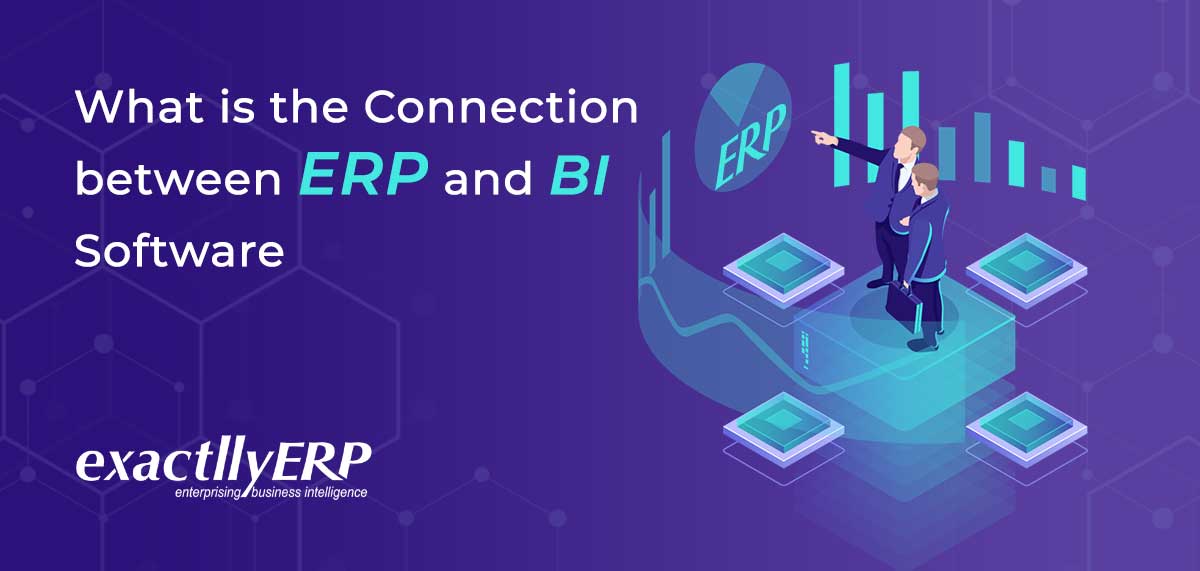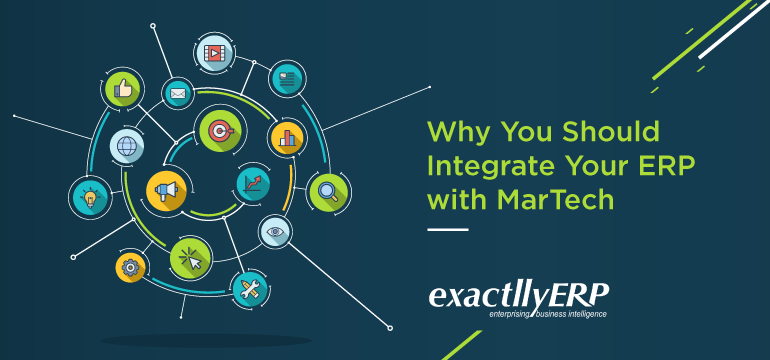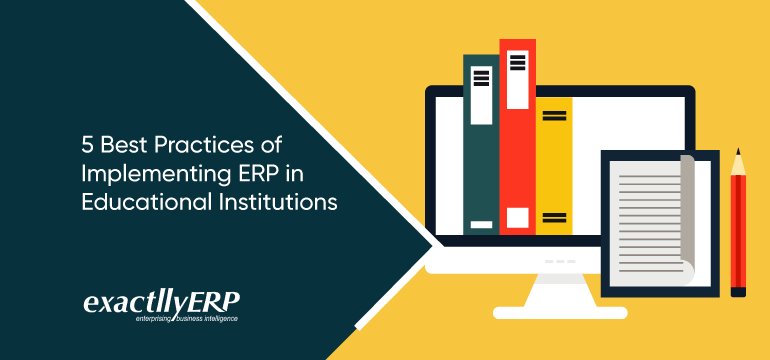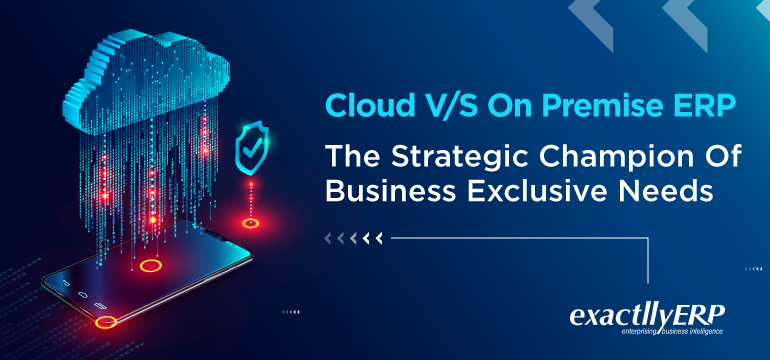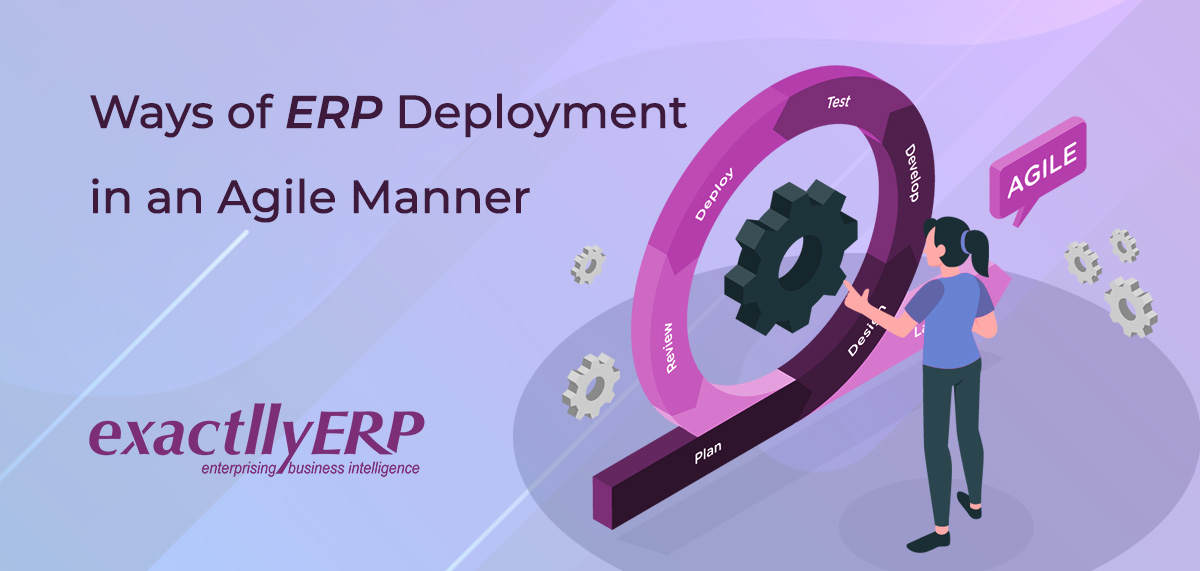Why is correct ERP implementation imperative?
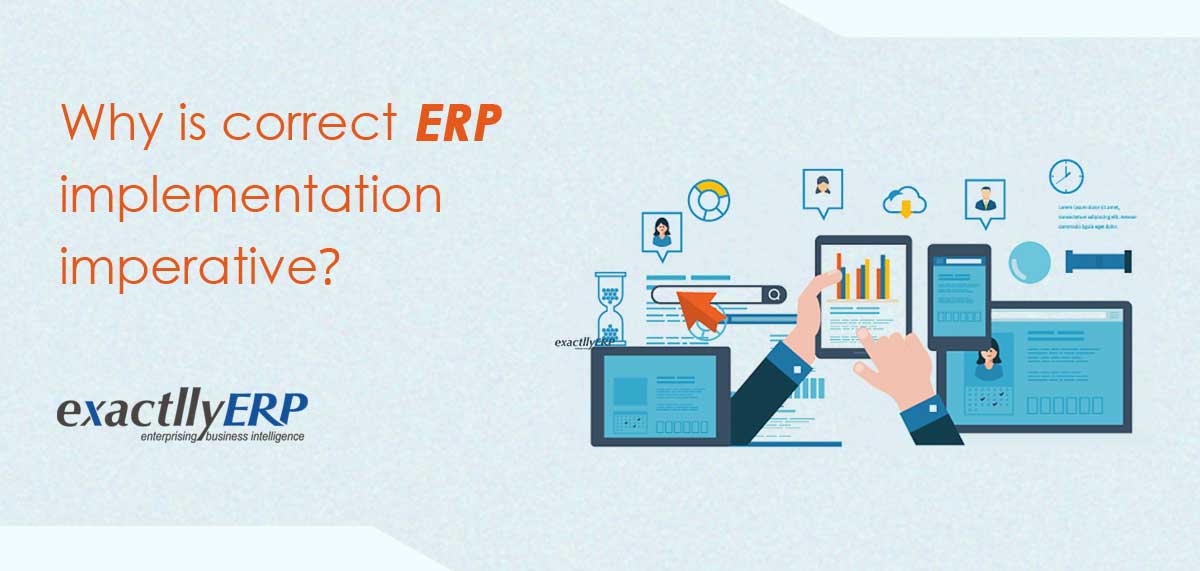
The worldwide ERP software market which will be approximately worth $42.69 billion by the end of 2020 definitely shows the impact these systems hold. Globalization is squeezing the current market for several industries which is why tools like ERP can offer businesses a competitive edge. From this, we can assess the importance of ERP. But the one question that most marketers overlook is; how important is the correct implementation of such systems. This will directly decide the success of the ERP solution & also measure the degree of its efficacy.
In this blog, we will learn about ERP implementation modes that will guarantee maximum benefit.
Steps for successful ERP implementation:
- Detailed summary – A project big or small requires the formulation of a detailed summary. This will help to understand the scope of the implementation program. The first task is to jot down the objectives of the project. A clear definition of the project agenda must be present. The definition of reason is directly responsible for the success of any project.
The next step is to arrange an implementation team for assigning roles.
The smooth realization of any project is only possible when the team is efficient.
- Graph a change management plan – Whenever a business moves forward to implement an ERP system, it must expect transformation at the very core level. Teams must focus here as this step determines the effectiveness of the implementation program. Creating an exhaustive change management plan thus becomes necessary for taking an account of the disruptive transformation that the business will soon experience.
The plan will incorporate the structuring of an explicit implementation schedule along with a timeline. This is for the purpose of user-based training, technical activities like cost forecasts, testing, etc. Most importantly, the allocation of adequate resources is important for successful implementation.
- Identifying the stages of implementation – Breaking down every stage of the implementation is important or else the entire process might run into complete chaos. The absence of structure will mean that the project might run on undefined paths that will again result in dead-ends & impasses. But when the implementation stages are defined, there will be a roadmap present to follow. This ERP implementation strategy will definitely guarantee an organized flow of implementation.
- Data migration – After finishing on the planning part, the next step is to start the business right away. This begins with data migration from the present system to the new ERP system. Proper data & a proper system go hand-in-hand. Inaccurate data will automatically lead to compromised output from the ERP system implementation.
Cleansing & verifying legacy data is the foremost step. Upon the completion of data processing, the next step is transferring the data to a new ERP software implementation. Following this is a thorough authentication of data mapping & integrity. This marks the end of the data migration procedure.
- User training – A business might know about the importance of an ERP system but if it doesn’t know the correct way of using it, then it is of no use. There is no doubt about the fact that every ERP system when designed is made to be absolutely user-friendly. This is especially for technophobes. But still, user training is an extremely important aspect.
The designing of a user training program has to be in a way that businesses can attain maximum benefits out of the ERP system. Optimization of user training is very important also for meeting the requisites of the manifold user groups. Along with this, offering role-based training to the employees holds immense significance.
Last but not the least, selecting the right training method is a vital aspect. There are both pros & cons present for in-person & online training. So businesses must select those methods that meet their needs. The impact of this ERP implementation strategy will be humongous with a proper response incorporation system in context to understanding the effectiveness of the training.
- Testing & going live – Going live calls for one last gaze at the final checklist. This will include:
- Checking the auto-backup functionalities
- Availability of sufficient resources from the IT team & who are all prepared for work
- System communication downtime
- Ensuring the fulfillment of every technical requirement
- Testing which is the pre-go-live
- Going live
Common ERP implementation mistakes that a business must avoid:
Along with the steps needed for successfully implementing an ERP system, it is equally important for a business to know about the common ERP mistakes. Not able to circumvent the mistakes might break a business. Watch out for these mistakes & ways to prevent them.
-
Not incorporating end-users in the various decision-making procedures
Many times, businesses emphasize their effort & time in receiving approval from the leadership executives. However, this is a wrong step that can cost the organization. Incorporating key employees here is important as they are the ones who will use the system more than anyone else.
Not just from the IT department but it is crucial to engage employees from the entire organization that includes manufacturing, finance, warehouse, operations department. When engaging stakeholders in all the steps of decision making modus operandi, it will certify that each person is endowed in discovering & implementing the correct solution seamlessly.
-
Ignoring the pros & cons of cloud-based & on-premises ERP
Evaluation of several factors is required when companies decide between cloud-based & on-premise ERP solutions. For instance, cloud deployment needs correct Internet connectivity & subscription kind payments. It also comes with advantages like catering to remote working employees. On the contrary, a bestowed IT staff, humongous upfront fees, up-to-date servers are the requirements of an on-premises deployment. This is applicable for businesses that want to host software on their very own servers.
Software-as-a-service is a predominant platform currently for the implementation of new ERP solutions. Businesses that carry experience of struggling with their previous ERP investments are finding SaaS extremely beneficial. However, this platform has several organizational challenges to pose as well.
Customizing SaaS solutions is not an option which is why users are bound to adopt the business procedures to the software. Due to the procedure changes, there is an impact that can be seen on the legacy systems in the context of integration. This largely has the potential of extending organizational change administration concerns. On top of this, businesses with exclusive functional requisites will also require a structure for addressing the needed functionality that the new system does not provide. This can be done either via workarounds or third-party software.
-
Feeling mesmerized by features
It is very important to know that features play a vital role but these are not everything. Most of the time businesses choose the ERP that carries the greatest features matrix. But as a matter of fact, businesses must take an account of the solution’s integration & flexibility capabilities, industry achievement history, and also customer support. It is vital to learn how well the ERP system will address the company’s requisites.
-
Improper budgeting for the technology staff
Leaders frequently tend to underestimate the investments that tag along with ERP implementation. This mainly incorporates the skill level & maintenance required for facilitating the project to take off successfully. There have been many examples where businesses have tried to establish more but with less. But this most if the time has led to failed implementations. It is extremely vital to take adequate time for proper budgeting. The talent that is actually facilitating the implementation needs to be taken into account. This will prevent businesses from encountering issues later on.
-
Not incorporating industry-specific way outs in the decision-making procedure (only if relevant)
In the context of selecting ERP solutions, leaders sometimes ignore the fact that the present time holds several small software organizations that support particular industries with specialized requirements. It is largely seen in pharmaceutical distribution. These are the specialized solutions or vendors that can offer more industry-specific attributes & also software customization. It is important to understand which is the better fit for the business.
Making the system of ERP implementation work for you
-
Analyzing the eagerness for ERP implementation
Many times, businesses are at an apparent inflection point that makes it obvious about the necessity of ERP.
- Legacy systems sometimes collapse beneath the weight of an ever-increasing complex business. During the growth period, it is important to execute appropriate systems, or else the business will reach a certain point where the capabilities of the legacy systems simply break down.
- The organization can also carry additions that are beyond the founding site. When there are two or three locations, it becomes very challenging to manage real-time data. ERP systems prove to be highly advantageous in these situations.
-
Documenting the business procedures
Deciding to implement ERP software, calls for the availability of well-documented & compiled business processes. This involves major procedures such as order-to-cash
& procure-to-pay. Also, this includes granular ongoing activities like timecard approvals and employee on-boarding. Emphasizing on step is necessary as seldom undocumented procedures become assumptions & as well all know, Assumption = Risk.
Documenting business procedures renders leadership & offers an undistorted view of the complexity, minimum requisite & scope of the project. One of the most important elements of this process is the unambiguous identification of information stakeholders at every step of the business procedures. There are chances of implementation failure when the leadership team does not find it necessary to take the downstream effects into account.
Several early-stage organizations do not carry enough documentation. Hence those businesses can opt for outside assistance from expert CPAs for gathering information in one place.
-
Discovering the VAR (Value at Risk) & Software solution to implement
ERP success is only possible when businesses select the correct software package. But this is one of the most complicated parts of the procedure as well. Researching is quite challenging as keeping everything opaque is a VAR thing. Hence, it is advised to transform this powerful process documentation into a precise description of the particular requisites. It is important to ask VARs to converse specifically to those needs in all their presentations. Depending on how specific an organization is the more particular the VAR will also be.
Also, it is suggested to ask the VAR regarding the other same companies about the software they sell & also about the one’s that VAR has experience working with. Companies must also seek for indications about the VAR apprehending the business correctly. You can then know whether VAR has functioned with similar requirements prior also or not. You need to be dubious if the VAR notifies that an unrelated business is analogous.
The VAR also helps in knowing whether the business model is non-standard or not as this will need to be followed with system customization. Also contemplating whether there is really any need for the nonstandard feature is also important. Several suboptimal practices & procedures have a tendency of grasping in the primary years of small or midsize businesses. Customization of the ERP system can be regarded as built-in cost & risk. This is because with the larger system’s every upgrade, most probably one-off updates will be required in the software’s customized part. This implementation can be utilized as a moment for rethinking & enhancing the present procedures.
Parting thoughts:
The benefits that ERP systems can offer to an organization are incomparable & uncountable. But the implementation of the ERP system is undoubtedly a risky affair. However, if businesses employ best practices & carry the capability of managing procedures discreetly, minimizing risks to large extents is possible. The takeaway from this blog post focuses more on the reasons for why to implement ERP & few ideas for enhancing the possibilities of success even more.
Neither developing nor delivering is any less challenging when it comes to ERP software. This calls for following every step with precision as mentioned above.
If you are seeking efficient ERP implementation services, feel free to connect with us.
As per authors Peter Fingar & Howard Smith, “Not all process-integration problems are technical and not all about IT. Integrating computer systems is not the same as integrating the business.”

